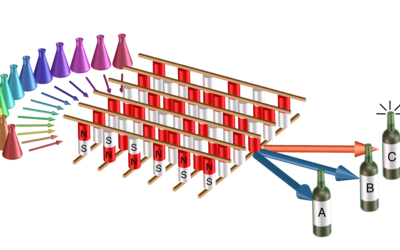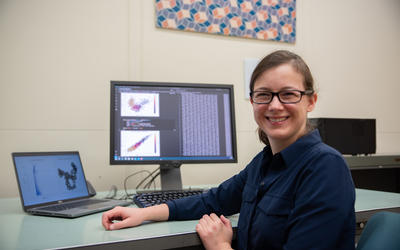Artificial intelligence (AI) applications are becoming more and more prevalent in our everyday lives. Most contemporary implementations of AI use digital logic and the conventional CMOS hardware that has enabled the information revolution. A team of NIST researchers seeks to enable future generations of AI by focusing on fabricating and measuring new brain-inspired circuits and architectures based on novel devices to deliver computing methods, speeds, and energies better than those achievable using the current computing paradigm. Conventional computing represents information with binary encoding – ones and zeros times different powers of two. The variety of approaches studied at NIST are founded on the concept that computing can be more efficient when information is directly represented by the physical properties of devices themselves. The devices then perform the computation directly, as opposed to the conventional approach of manipulating the binary representation.
The need for these novel approaches is driven by several realities of modern computing. We are pushing computers to take on tasks that humans are much better at than traditional computers. The demands for this type of computing is growing much faster than the capabilities of traditional computers. Perhaps most of all, the energy required to deliver the computations is the most rapidly increasing sector of energy consumption in the world, and it must be reduced to limit the impact on the climate. It is also essential to make computing more efficient in “edge” applications in which computers are embedded in devices that have very restricted energy supplies. The efficiency of the brain drives research that identifies devices acting like the neurons and synapses of the brain and uses them to enable algorithms that compute like the brain. NIST’s AI Hardware team’s research aims to develop the necessary device-level and circuit-level measurements and theory to support the evolution of this technology from laboratory research to commercial application.



